The avocado (Latin Name – Persea americana) is a mid or medium sized tree endemic to the Americas, most likely in the highlands of south and central Mexico to Guatemala.
It is a part of the Lauraceae family of flowering plants. The plant’s fruit, usually just call an avocado (also known as alligator pear or avocado pear), is a huge fruit with a single enormous seed.
Avocado trees are largely self-pollinating and are often reproduced through grafting to ensure consistent fruit size and quality. See how to store avocado oil.
If an Avocado Is Brown Inside, Is It Bad?
Yes, you can eat an avocado that is slightly browned on the inside. But if it has a significant brown color inside, it could indicate spoilage.
Avocados ripen naturally over time, and sometimes they turn brown due to exposure to light, air, heat, or other factors. When this happens, it’s usually safe to eat the fruit.
But if you notice that your avocados are turning brown inside, it might be time to throw them out. As long as the skin hasn’t started to crack, you can still eat the fruit. But if the skin starts to look dry or wrinkled, toss it out immediately.
It’s also possible that your avocados were exposed to excessive heat during shipping or storage.
What about brown avocado oil, is it off.
If you suspect this happened, refrigerate the fruits until they return to normal color. Then store them in the refrigerator until you’re ready to eat them, but test first with the above before using them for consumption.
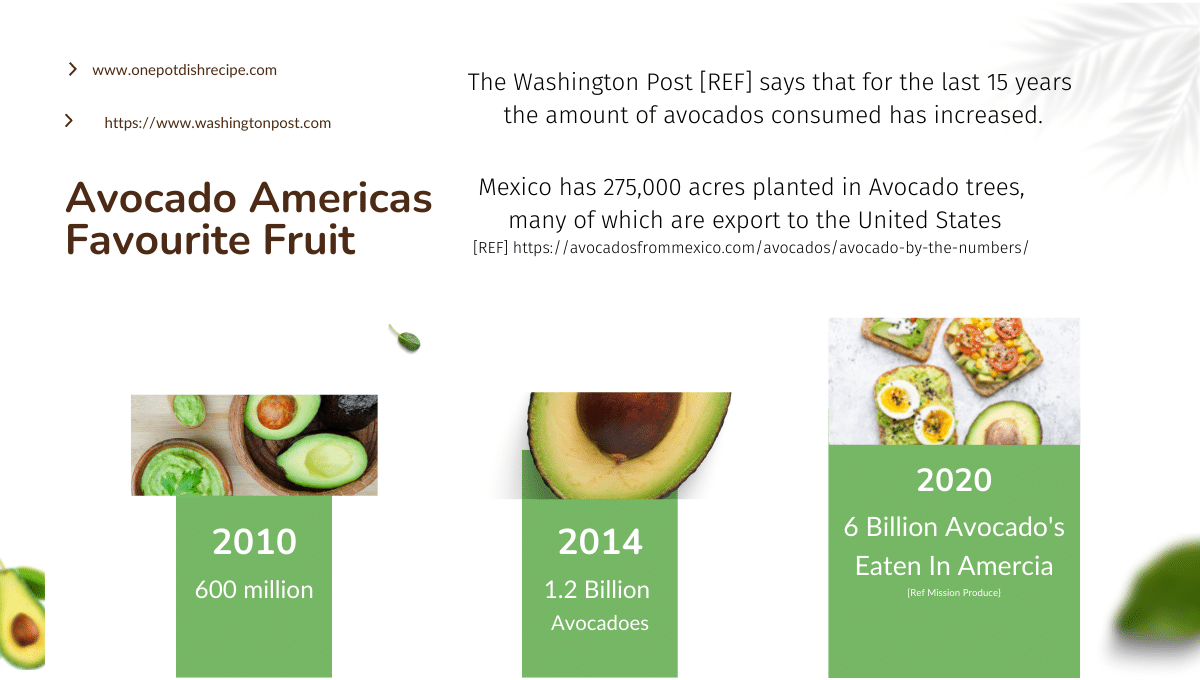
Can You Eat an Avocado That’s Brown Inside?
Yes, you can eat an avocado that’s turned brown inside. You can also use them to make Guacamole.
Avocados ripen naturally over time, and while they can sometimes turn brown, it’s usually just due to exposure to light.
However, see our warnings below for when you can not eat an Avocado.
Avocados are available year round, so you can always buy a few extra to snack on during the summer months. Just remember to store them properly to avoid rotting. Don’t let avocados sit in direct sunlight or near heat vents, and wrap them tightly in plastic bags.
It’s also possible to prevent browning by storing them in the refrigerator.
But, if you really want to enjoy the flavor of an over-ripe avocado, you can still eat it. Just cut off the brown part and enjoy the rest.
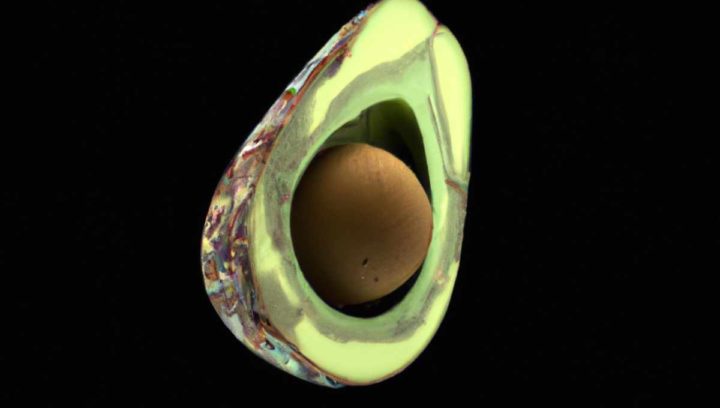
Can an avocado with a few brown streaks or spots or dots be eaten?
If there are only a few, it is ok to use; I prefer to scape them out with a teaspoon first as they tend not to taste that good. The Washington Post also covered this a little recently and we decided to investigate in more detail and give you 9 workable cheats to check put the green avocado flesh and if it is ripe or rotten.
Top 9 Warnings – How to Tell if An Avocado Is Bad?
Avocados are delicious fruits that are packed full of nutrients. Unfortunately, avocados aren’t always perfect. Sometimes they develop bruises, cracks, mold, or other imperfections. These signs could indicate that you have a spoiled avocado – the fruit is off or damaged.
And if you’re lucky enough to have a local avocado farmer who sells his or her produce directly, ask him or her to let you know when the avocados are ready.
To avoid wasting money on bad avocados, look for these telltale signs:
1. Can I Use an Avocado With Dented Skin
Small indentations are ok; they are probably caused by the fruit rubbing against a branch on the tree.
However, if the outer skin has a sunken appearance or big area, it is probably a sign that the inside has gone bad or is at least starting to spoil. I would not buy this.
As avocados ripen at home sometimes, they develop bruises or other imperfections that look unsightly. Fortunately, there are ways to remove dents and stains from your avocado.
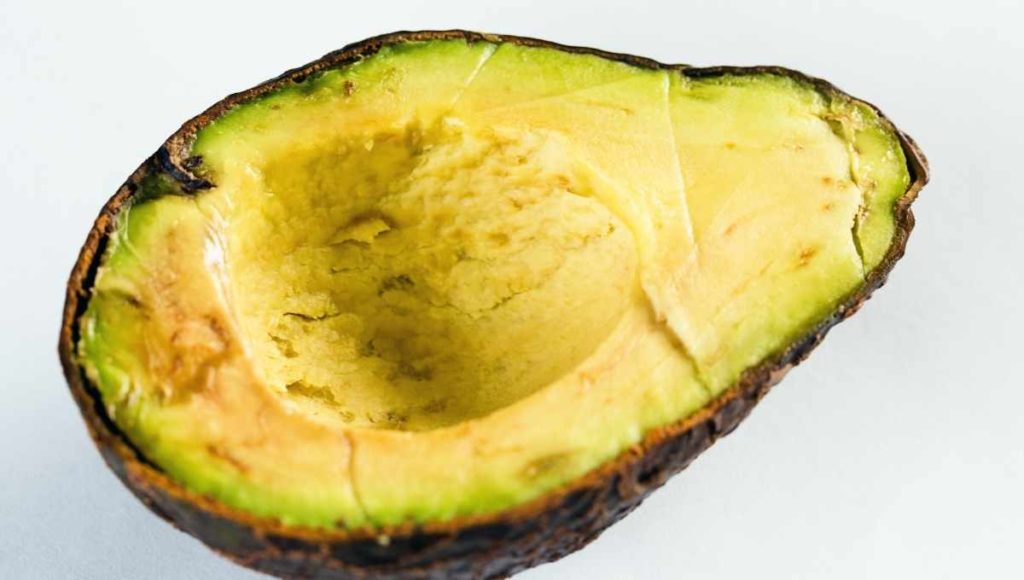
To begin, wash your avocado under cold water. Then cut off the end of the fruit and peel back the skin. Next, slice open the avocado along the seam and scoop out the flesh removing any brown spots.
2. The Outside Skin Looks or Feels Shriveled
Yes, you can eat an avocado with slightly discolored skin. But you shouldn’t eat an avocado with shriveled skin. An avocado with shriveling skin is a sign of spoilage.
Ripe avocados are firm, smooth, and shiny. Avoid eating avocados that look soft, mushy, or wrinkled. Don’t buy avocados that are bruised or damaged.
3. If an Avocado has Black Outer Skin is it Off
Is avocado black inside safe to eat – No it is not safe. Blackened skin usually indicates that the avocado has gone bad.
Can you get sick from eating a bad avocado – certainly you may get sick – In addition, blackening may be a sign of bacterial contamination.
4. The Outer Skin is Brown or Going Brown
Sometimes avocados spoil before they reach the grocery store. Avocados can look unappealing. When this happens, the outer skin turns brownish green color. Avocado skin discoloration is usually caused by exposure to sunlight.
This does not necessarily mean that the fruit inside is spoiled. Avocado skins turn brown after exposure to air and light for several days.
Avocados can look unappealing. When this happens, the outer skin turns brownish green. Avocado skin discoloration is usually caused by exposure to sunlight.
If I had a choice, I would select one with a shiny avocado green outer layer.
5. Is A Very Soft To Touch Avocado Off
Unfortunately, avocados aren’t always easy to spot when they’re bad. Some signs that an avocado is spoiled include moldy spots, discoloration, and softness to feel.
To avoid wasting money on rotten avocados, look for these telltale signs before purchasing. First, inspect the skin of the fruit. If it feels firm, then it’s probably okay. But if it feels mushy, soft, or spongy, then it’s likely rotten.
If you’re still unsure whether or not an avocado is safe to eat, then you can always bring it back to the store. Just remember that you’ll not lose any money if you return a rotten avocado.
6. The Avocado has a Bad Smell
This is a fun question as it has an easy answer – If the avocado has a bad smell put it in the trash.
After an avocado is picked, it needs to be stored properly until it reaches peak ripeness.
If you notice that an avocado smells bad after it’s been refrigerated, it might be spoiled, and if in doubt, throw out.
If you still aren’t sure if an avocado is rotten, cut off both ends and open it up. If it looks white inside, it’s fine; otherwise, throw it out immediately.
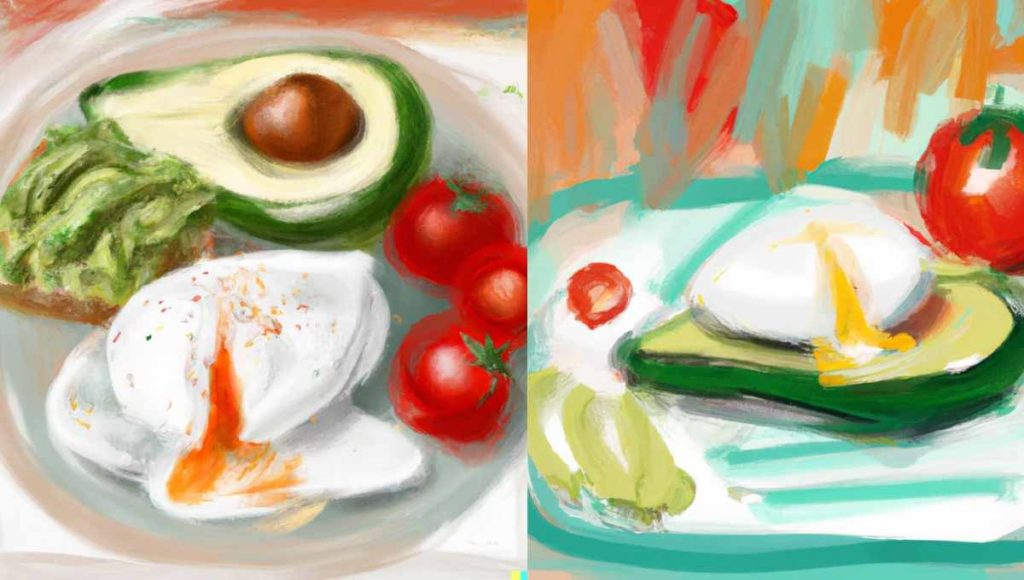
7. The Avocado Has Mold On the Outside Should I Buy It
When they’re ripe, they turn brownish green and can develop mold on the outside.
This doesn’t necessarily mean that the avocado itself on the inside is rotten, though.
Avocado molds look like fuzz, but if you see any discoloration on the outside, don’t eat it.
Do Not sniff an avocado with mold – Mold can cause serious health problems.
I would not buy a moldy avocado, and if one at home has mold it would be put into the garbage.
8. The Avocado Inside Flesh is Dark Is It Rotten
But sometimes avocados have dark flesh when cut open, making it difficult to tell whether they’re bad or not. So how do you know if an avocado inside flesh is rotten?
There are two main indicators that an avocado is spoiled: discoloration and smell.
Discoloration occurs when the avocado starts to oxidize, turning dark green to brown to eventually a blackish purple
. Both signs indicate that the avocado is no longer safe to eat.
To avoid wasting money on uneaten avocados, look for discolored ones and throw them out.
9. Avocado Inside Flesh is Stringy is it Rotten
An avocado is a fruit that’s packed full of nutrients and healthy fats. But sometimes avocados turn bad inside the flesh, making them stringy and rotten. When this happens, the texture of the avocado becomes unpleasant, and the taste turns sour.
If you notice any of these symptoms, throw the avocado away immediately. If you’re unsure whether an avocado is bad or not, try cutting into it to see if it feels mushy or slimy. If it does, toss it!
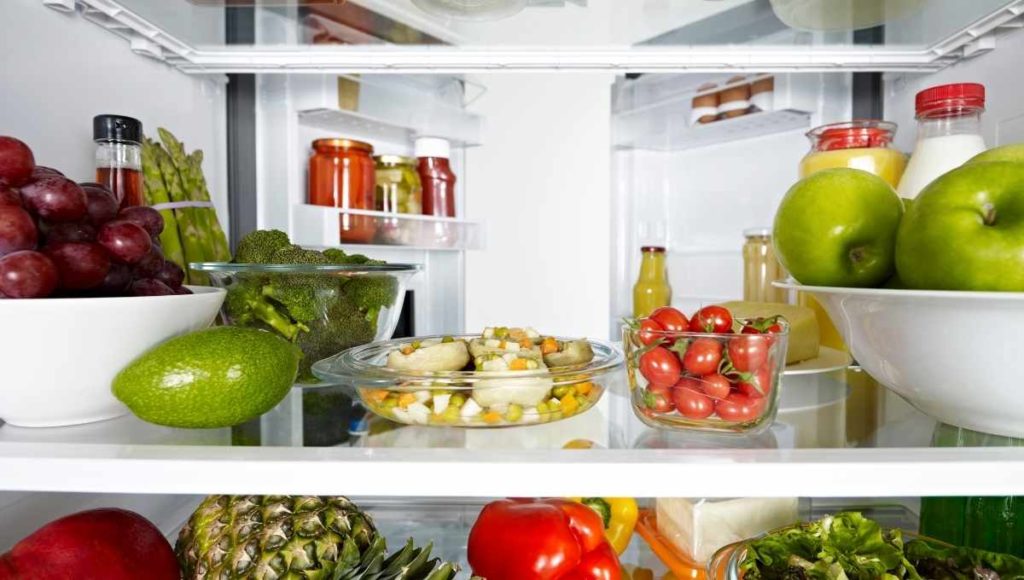
How to Tell if An Avocado Is Ripe
Avocados aren’t just delicious; they’re nutritious, versatile, and easy to prepare. But sometimes avocados aren’t ripe enough to eat, and you might end up throwing them out.
To avoid wasting food, it’s important to know when an avocado is ripe.
There are two main signs that indicate ripeness: color and feel.
When checking for color, look at the skin near the stem. If it’s green, the fruit is unripe. If it’s light yellowish brown, the fruit is still underdeveloped and needs to be left alone until it turns orange or dark green.
But color isn’t always the best indicator of ripeness. Sometimes the flesh itself feels firm or spongy instead of soft.
To tell whether an avocado is ripe, gently press down on the fruit with your thumb. If it yields slightly, then the fruit is probably ripe. Otherwise, wait a few days.
Another check is to not buy avocadoes without a stem ( this is a little cap on the top). I have found that without a stem the avocados go brown side very quickly.
If you want to make sure you’re buying the best avocadoes possible, check out the following tips.
1. Look for firmness. If the avocado feels hard and dense, it probably isn’t ripe. Instead, look for softer, more pliable fruit. You can test this by pressing the sides of the fruit against your palm. If it yields slightly under pressure, it’s ripe.
2. Check the stem. Avocados usually come attached to a stem, which helps prevent them from rolling around during shipping. If the stem looks dry and brittle, it’s likely just dried out and is ok. However, if the stem looks moist, it could indicate spoilage. In this case, throw it away.
3. Check for bruises. A bruise on the outside of the fruit indicates damage to the inner tissues. This might happen when the fruit falls off the tree, or it might be caused by a bump along the way. Either way, it’s a sign that something went wrong during production.
What Does a Ripe Avocado Look Like?
To tell whether an avocado is ripe, look for signs of ripeness including color change, texture, and smell. When you pick up an unripe avocado, it feels firm and smooth.
There are many factors that you can look for on an avocado to see if it is ripe enough to enjoy, including size, shape, texture and color.
Size
The size of an avocado is usually determined by its maturity level. An avocado that is too small will likely never ripen properly. As the fruit grows larger, it becomes increasingly difficult to tell if it is fully mature. To test for ripeness, simply squeeze the fruit gently. If it feels soft and yields easily, it is probably ready to eat.
Shape
Avocados come in different shapes and sizes, ranging from round to pear-shaped. If it is mishappened or very small, I would not select it.
Texture
There are three basic types of avocado textures. Soft avocados are smooth and creamy, while hard avocados are rock solid. Medium-soft avocados fall somewhere in between. When testing for ripeness, try squeezing an avocado. If it feels soft, chances are it is ripe.
Are Overripe Avocados Safe To Eat
But just like other foods, avocados can spoil if left to long before eating. And while avocados are generally safe to eat once ripe, overripe ones can pose health risks.
To avoid eating an avocado past its prime, look for signs of over-ripeness.
Ripe avocados will feel soft and yield slightly when pressed. When checking for ripeness, try to buy avocados that aren’t overly brown. These colors indicate that the fruit hasn’t had enough time to develop its natural coloration.
After purchasing your avocado, store it in the refrigerator until you’re ready to eat it.
– Overripe avocados should be discarded before eating them.
– Don’t eat discolored parts of an avocado.
– Lemon juice helps prevent browning of cut avocado.
– Overripe avocados should be discarded.
While overripe avocados may contain mold or bacteria that could harm your digestive system. So, if you notice anything unusual, throw the avocado away immediately.
Top Tips for To Choose a Perfect Avocado
– Don’t buy too many avocados at once. They’ll ripen faster and spoil quicker especially when kept together.
– Keep an eye out for Avocados that have been sprayed with pesticides – I try not to but these.
– When choosing avocados, pay attention to color. Green ones tend to be firmer, while darker green or with a little bit of brown are softer
– Do not buy in bulk as many in the inside of the package that you can not see ae usually ripening faster because of the natural compounds that a re given off by the avocados they are next too, Stagger your buying schedule. If you must buy in bulk be prepared to freeze.
How Long Does It Take an Avocado to Ripen?
Once you’ve picked the fruit off the tree, you can also sniff it to detect the aroma. If you smell an avocado that hasn’t reached full maturity, it will likely still have a faint scent of citrus. But as the fruit gets closer to perfect, the scent will change to a stronger, sweeter smell.
So now that you know how to tell if an avocado is ripe, let’s talk about how long it takes to reach perfection. Depending on the variety of avocado, it can take anywhere from 3 days to 2 weeks for it an avocado to ripen.
So if you plan to store your avocado, make sure to buy it while it’s still green.
Otherwise, you could end up with a rotten avocado.
How Long Do Avocados Last?
Unfortunately, avocados spoil relatively fast after becoming ripe or even after picking, making it difficult to store them properly.
But avocados spoil very quickly, especially if they aren’t stored properly. So, how long does avocado keep fresh at room temperature? And what happens if you put an avocado in the refrigerator instead? Let’s find out!
How to Store Avocado
To extend the shelf life of your avocado, try storing it in the refrigerator. The cooler temperature slows do the ripening process dramatically.
Room Temperature
Avocados are delicious fruits that are perfect for snacking, cooking, and making guacamole. Unfortunately, avocados aren’t very long lasting. Once cut open, an avocado will begin to lose flavor at room temperature after just a few hours, they will start to go brown.
How Long Do Avocados Last in The Fridge?
One the avocado skin has been cut they will on;y last a few days in the chiller. It is imperative that they are wrapped tightly with plastic wrap. You can also rub a little lemon juice on the exposed avocado flesh to reduce the rate of browning.
To extend the life of your avocado, store it in the refrigerator. But don’t forget to bring it back to room temperature before eating. This will allow the fruit to warm up again, restoring its flavor.
But if you really want to prolong the life of your avocado, you should consider freezing it instead. Freezing preserves food much better than refrigeration does, and it keeps avocados fresh for up to six months. Just make sure that you remove the skin before freezing.
How to Store Ripe Avocados
Here are some tips for storing ripe avocados:
How to Store Whole Ripe Avocadoes
• Keep avocados in a cool place. Don’t put them in direct sunlight or near heat vents.
• Rinse avocados under cold water immediately after purchasing them.
• Wrap each avocado loosely in plastic wrap and then place it in a paper bag.
• Place the bagged avocados in the refrigerator.
• Remove the avocados from the fridge 1 days before eating.
• Once the avocados are ripe, remove them from the paper bags and cut off the stem ends. Peel the skin off the fruit and slice into halves or quarters.
• Serve the sliced avocados on toast, crackers, or tortilla chips.
You can also buy and avocado keeper, but honestly I prefer the cool bard place in a brown paper bag with hole in it.
How to Store Cut Ripe Avocadoes
Unfortunately, avocados spoil very quickly after cutting them open.
To prevent this, store cut ripe avocadoes in the refrigerator until you’re ready to eat them. Wrap the avocado in cling wrap tightly.
This method will help preserve the avocado’s flavor and texture while keeping it safe from bacteria.
How to Ripen Avocados Quickly in The Microwave
Fortunately, there’s a quick and easy way to ripen avocados in the microwave – i.e speed up the ripening process. They do need to be already slightly soft for this “Avocado Ripening Cheat” to work.
All you have to do is first cut the avocado in half and remove the bit pit. Place the it in a paper bag, and put it in the microwave for about 1 minute. For half an avocado use 30 seconds.
Afterward, open the bag and let the avocado cool off completely before serving. You can also speed up the process by plunging it in iced water bath.
Ways to Use an Avocado when It’s Overripe
They’re delicious when ripe, but they can quickly turn into mushy messes if left out too long. Here are some tips to help you enjoy this delicious fruit while avoiding disaster.
What to Do with An Overripe Avocado
You are limited to what you can do with overripe avocados. Here are some ideas for how to use them.
Avocado Honey Face Mask
This face mask will help reduce spots and blemishes while keeping your skin smooth and hydrated. It contains natural ingredients like honey, avocado, and lemon juice which are known to fight against signs of aging.
Easy Avocado Hair Mask
In this recipe, you’ll combine avocado, coconut oil, honey, and lemon juice. Mix everything together thoroughly and apply it to your hair. Leave it on for 15 minutes and rinse out. You can use this mask once every week.